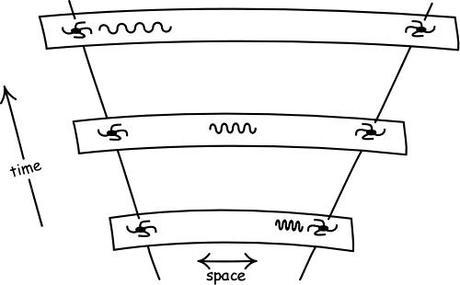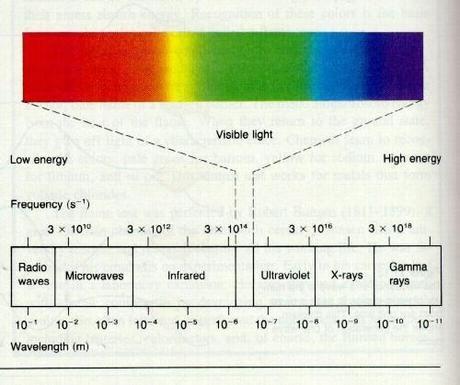
http://www.pitt.edu/~jdnorton/teaching/HPS_0410/chapters/big_bang/cosm_red_shift.gif
that image, there, it's from some 'learned paper' on Expansionist Universe, you know, Big Bang. It is used to illustrate how light from an expanding-universe source will have light that's redshifted relative to its distance from us.MAYBE NOT
Remember, energy systems (and what is light other than an energy system) propagating an influential wave through a medium are governed by ENTROPY. In terms of the above illustration, this means LIGHT will always tend to dissipate its energy towards the LOWER ENERGY END of the spectrum over time i.e. the red-shifted end, the place where (eventually) radio waves live.
Take this image (below) we can clearly see the Light Spectrum in the context of the more energetic expressions of electromagnetic radiation; from gamma rays on the right down to radio waves on the left.

can we use this graph (not to speculate about an Expanding Universe, sourced from a 'fantastic' Big Bang, and instead use it) to show how all em radiation will tend to longer and longer, redder and redder wavelengths over its life?
I contend that 'local' light i.e. that which we receive here on Earth, from our sun, hasn't had long enough to show us its red-shifting property before it carries on into space or is absorbed by materials here on Earth.
And please don't insult me with, "But, Mike, you're not even a scientist," as everyone understands (or they should) that all marbles roll DOWNHILL. I mean, it's not that hard to understand, right?
PS, and possibly tangential: I got this idea from brushing my teeth - I was standing there, near a reflective surface, in the bathroom, thinking, "At what point does a reflective surface become a non-reflective surface?" You know, that point where we cna no longer see our reflection, like in a white-matt-painted door, say. The answer, of course, is all surfaces are light reflective surfaces, whether we can see our reflection or not, otherwise we wouldn't SEE the surface at all.

